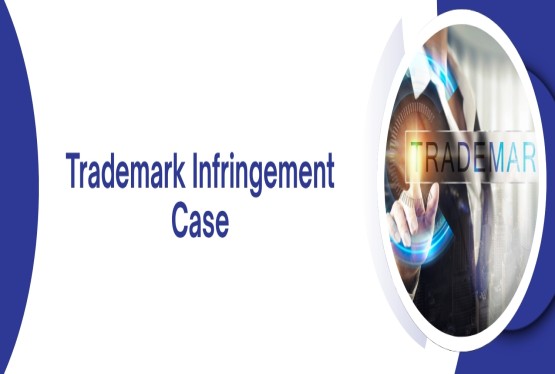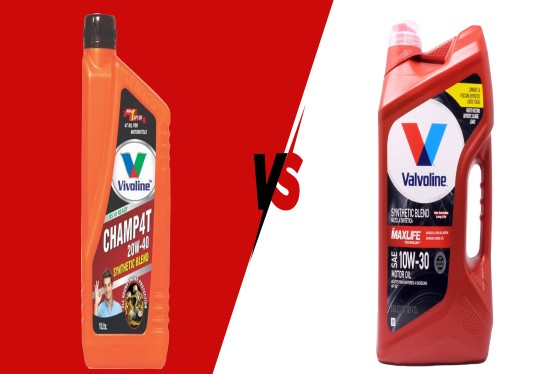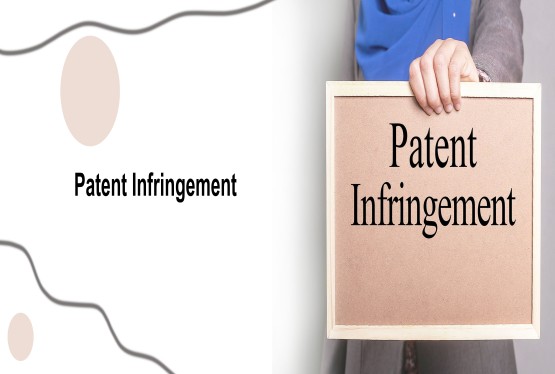Trademark law is a key aspect of intellectual property that safeguards the rights of businesses by allowing them to protect distinctive marks used to identify their products or services in the marketplace. In India, the Trade Marks Act, 1999 governs trademark protection, and trademarks are categorized according to the Nice Classification system, which divides goods and services into 45 classes. Class 8, as defined in the Nice Classification, covers hand tools and implements used for a variety of purposes, including those related to construction, gardening, and personal care. This article explores Trademark Class 8, its legal framework, key statutes, and case precedents that have influenced its interpretation in India.
What is Trademark Class 8?
Trademark Class 8 primarily covers hand-operated tools and implements, as opposed to machinery or motor-driven equipment. The goods under Class 8 are designed to be operated manually and are generally intended for tasks such as construction, gardening, personal grooming, and other similar activities. These products are essential for various professional and domestic tasks, and they range from everyday tools like hammers and screwdrivers to more specialized implements used in horticulture and healthcare.
Some of the key goods included in Class 8 are:
-
Hand tools (e.g., hammers, screwdrivers, pliers, wrenches, chisels)
-
Hand-operated gardening tools (e.g., spades, forks, rakes, hoes)
-
Manicure and pedicure instruments (e.g., nail clippers, tweezers, cuticle pushers)
-
Hand-operated surgical instruments (e.g., forceps, scalpels)
-
Razors and shaving instruments
-
Scissors and shears
-
Other hand-operated tools used in carpentry, gardening, or other crafts
Trademark protection for these tools and implements ensures that businesses in industries like manufacturing, retail, and service sectors can distinguish their products from competitors and prevent unfair market practices such as counterfeiting and imitation.
The Legal Framework for Trademark Class 8 in India
Trademark protection in India is governed by the Trade Marks Act, 1999, which allows individuals and businesses to register and protect their trademarks under the provisions of the Act. The Act adopts the Nice Classification system, which categorizes trademarks into different classes based on the nature of the goods or services. Class 8 covers hand tools, implements, and related goods, and is subject to the same legal framework that governs other classes. The Act also encompasses provisions for trademark infringement and Trademark withdrawal, outlining the legal consequences and procedures related to these actions.
1. The Trade Marks Act, 1999: The principal statute governing trademarks in India. Section 2(zb) of the Act defines a trademark as any mark capable of distinguishing the goods or services of one person from another. Section 9 of the Act provides the grounds for refusal of registration, including marks that are not distinctive or are descriptive in nature. Section 11 establishes the grounds for rejection if the trademark is similar to an existing registered trademark, which is critical for Class 8 as many hand tools may have similar names or features.
2. The Consumer Protection Act, 2019: Although not directly related to trademarks, this Act safeguards consumers against counterfeit products and deceptive trade practices, which is particularly relevant in Class 8 due to the prevalence of imitation tools in the market. The Act enforces penalties on sellers of counterfeit goods, thereby providing additional protection for trademarks in Class 8.
3. The Bureau of Indian Standards (BIS): The BIS sets quality and safety standards for various tools and implements. Hand tools, as part of Class 8, must meet these standards to ensure that they are safe for consumer use. Manufacturers registering trademarks for hand tools under Class 8 must ensure compliance with these standards.
4. The Goods and Services Tax Act, 2017 (GST): The GST system has significantly impacted the taxation of products under Class 8. While it is not directly related to trademark registration, it affects the pricing and trade of hand tools, implements, and other goods covered under Class 8, thereby indirectly influencing trademark strategy.
Key Considerations in Registering a Trademark in Class 8
For manufacturers, retailers, and service providers, registering a trademark for hand tools and implements in Class 8 involves several critical considerations to ensure that the trademark is legally protectable and distinguishable in the market.
1. Distinctiveness: One of the fundamental requirements for registering a trademark is that it must be distinctive and capable of distinguishing the goods of one business from those of another. Descriptive terms such as "Sharp Hammer" or "Wooden Saw" may not be granted protection as they do not serve to identify the source of the goods. Instead, trademarks that are inventive or that convey a unique association with the goods are more likely to be registered successfully.
2. Avoiding Generic or Common Terms: Trademarks consisting of generic or common terms are not eligible for protection under Indian trademark law. A tool described merely by its common name or function, such as "Gardening Shovel," would likely face refusal unless it is accompanied by a distinctive logo or branding element.
3. Non-Functionality of the Mark: A mark that is functional or essential to the operation of the hand tool is not protectable. For example, the shape of a hammer's head that serves a functional purpose in the tool's performance would not be eligible for trademark protection. Trademark law is primarily concerned with marks that distinguish the source of the goods rather than those that serve purely utilitarian purposes.
4. Goods Complying with Safety Standards: Hand tools must comply with relevant safety standards, as set by the Bureau of Indian Standards (BIS) or other governing bodies. A trademark for a hand tool that fails to meet these safety standards may not be registered, and any subsequent sale of non-compliant goods can expose businesses to legal risks.
5. Likelihood of Confusion: A key consideration when registering a trademark is the potential for confusion with an existing mark. In Class 8, where tools often have similar functions or designs, it is important to conduct a thorough trademark search to ensure that the proposed mark is not similar to others already in use. The likelihood of consumer confusion is a fundamental factor in determining the registrability of a mark.
Precedents and Case Law Related to Trademark Class 8
Several legal precedents in India have shaped the application of trademark law for goods in Class 8. These precedents emphasize the protection of distinctive marks, the prevention of consumer confusion, and the importance of compliance with safety standards.
1. Bajaj Electricals Ltd. v. The South India Tools and Dies (2002)
In this case, Bajaj Electricals Ltd., a leading manufacturer of electrical and hand tools, filed a trademark infringement suit against The South India Tools and Dies, alleging the unauthorized use of a similar mark for hand tools. The court ruled in favor of Bajaj, noting that the trademark in question was distinctive enough to represent Bajaj’s brand identity in the market. This case emphasizes the need for hand tools to have distinct and non-generic trademarks to avoid consumer confusion.
2. Khilona Bazar Pvt. Ltd. v. Toy Association of India (2011)
Although this case primarily concerned toys, the principles of trademark protection and distinctiveness were upheld by the court. The case centered on the use of a similar logo on children’s hand tools and toys. The court reaffirmed that trademarks should be distinctive and avoid consumer confusion, even in highly competitive markets where many products may serve a similar purpose. This precedent underscores the importance of choosing a distinctive mark for Class 8 products.
3. Hikoki Corporation v. Hitachi Koki Co. Ltd. (2019)
This case involved Hikoki Corporation, a manufacturer of industrial tools, which claimed that Hitachi Koki Co. Ltd. was using a confusingly similar trademark. The court ruled in favor of Hikoki, emphasizing that trademarks for hand tools and implements must be sufficiently different to avoid confusion. The decision reinforced the notion that businesses must be vigilant in safeguarding their trademarks to prevent unauthorized use.
Challenges in Protecting Trademarks in Class 8
Trademark owners in Class 8 face various challenges in protecting their marks for hand tools and implements. Some of the key challenges include:
1. Functionality Issues: Tools and implements often involve design features that are functional and necessary for their intended use. These functional features cannot be protected under trademark law, as trademarks are meant to serve as identifiers of the source of goods, not as functional designs.
2. Counterfeiting and Imitation: Counterfeit and imitation tools are a persistent problem in markets worldwide. Manufacturers of hand tools in Class 8 must take proactive steps to prevent infringement and ensure that their trademarks are properly enforced.
3. Competition and Genericism: In industries where products serve similar functions, there is a risk that trademarks may become generic over time. Businesses must ensure that their marks remain distinctive and continue to signify the source of the goods.
Conclusion
Trademark Class 8 plays a crucial role in protecting the rights of businesses that manufacture and sell hand tools, implements, and related products. The Trade Marks Act, 1999 provides the legal framework for trademark protection in India, while precedents like Bajaj Electricals Ltd. v. The South India Tools and Dies the importance of distinctiveness and the prevention of consumer confusion. As the market for hand tools continues to grow, businesses must remain vigilant in safeguarding their trademarks to preserve their brand identity and protect consumers from counterfeiting and imitation.
Frequently Asked Questions
Q1. What products are included in Trademark Class 8?
Ans. Trademark Class 8 encompasses a wide range of hand-operated tools and implements. This includes items like hammers, screwdrivers, pliers, wrenches, chisels, gardening tools (spades, forks, rakes), manicure and pedicure instruments, surgical instruments, scissors, shears, and various other tools used in construction, gardening, personal care, and other industries.
Q2. Why is Trademark Class 8 important for businesses?
Ans. Trademark protection under Class 8 is crucial for businesses manufacturing and selling hand tools and implements. It allows them to establish and protect their brand identity, preventing competitors from using similar marks that could confuse consumers and mislead them about the source of the products. This protection is vital for building brand loyalty, fostering consumer trust, and maintaining a competitive edge in the market.
Q3. What are the key legal considerations for registering a trademark under Class 8?
Ans. Key considerations include ensuring the distinctiveness of the mark. Descriptive terms or those that are purely functional may not be eligible for registration. The mark must not be confusingly similar to existing trademarks in Class 8 or other relevant classes. Compliance with safety and quality standards, especially for tools and implements, is crucial for successful registration.
Q4. How do judicial precedents like Bajaj Electricals Ltd. v. The South India Tools and Dies impact trademark law in Class 8?
Ans. This case, along with other precedents, emphasizes the importance of distinctiveness and the prevention of consumer confusion in the context of trademark protection for hand tools. These cases guide businesses and legal practitioners in understanding the legal requirements for registering and protecting trademarks in this class, ensuring that brand identities are protected and fair competition is maintained in the market.
Q5. What are the challenges faced by businesses in protecting trademarks under Class 8?
Ans. Challenges include the potential for functional trademarks, where the mark itself is essential to the product's functionality. Counterfeiting is a significant concern, particularly in the case of widely used and easily replicated tools. Additionally, the risk of genericism, where the trademark becomes synonymous with the product itself, can weaken brand protection.






























_(b)_of_the_Trademark_Act,_1999_(1)_crop10_thumb.jpg)



_crop10_thumb.jpg)




























_crop10_thumb.jpg)
_crop10_thumb.jpg)






_crop10_thumb.jpg)








_crop10_thumb.jpg)



_crop10_thumb.jpg)





























_crop10_thumb.jpg)

















_crop10_thumb.jpg)






_crop10_thumb.jpg)











































































































































_crop10_thumb.jpg)




































_crop10_thumb.jpg)












_crop10_thumb.jpg)















































_crop10_thumb.jpg)
























































































